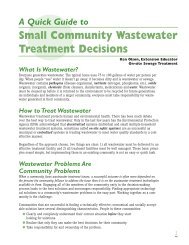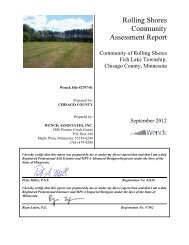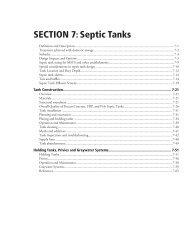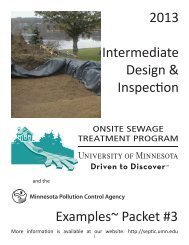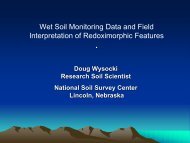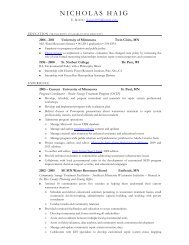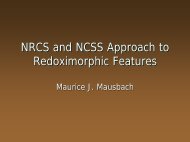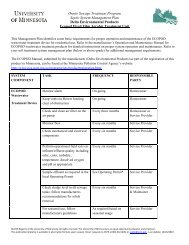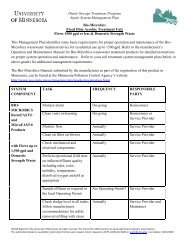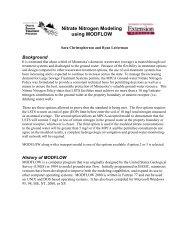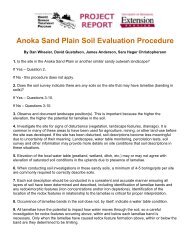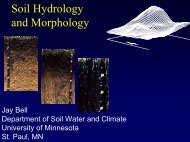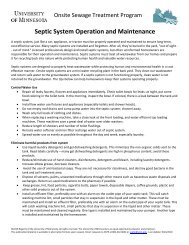MPCA Design Guidance for Large Subsurface Wastewater ...
MPCA Design Guidance for Large Subsurface Wastewater ...
MPCA Design Guidance for Large Subsurface Wastewater ...
Create successful ePaper yourself
Turn your PDF publications into a flip-book with our unique Google optimized e-Paper software.
Introduction<br />
What is an LSTS? LSTS stands <strong>for</strong> <strong>Large</strong> <strong>Subsurface</strong>/Sewage Treatment System. In very simple terms, a<br />
LSTS is a large “septic system” that discharges treated sewage (wastewater) through the soil to the ground<br />
water.<br />
Minn. R. 7080.0600, subp. 2(B) requires a State Disposal System (SDS) Permit <strong>for</strong> a single Individual Sewage<br />
Treatment System (ISTS), or group of ISTS, under single ownership within one-half mile of each other, that is<br />
designed to treat an average design flow greater than 10,000 gallons per day.<br />
This document is intended to guide an LSTS designer through a step-by-step outline on how an LSTS<br />
evaluation and design should be per<strong>for</strong>med. However, it should be understood that designing an LSTS is<br />
typically an iterative process. If, while actively working on a design, an unfavorable restriction becomes<br />
evident and a design change is made, this change could affect conclusions reached earlier in the design<br />
process. It is suggested that you contact the Minnesota Pollution Control Agency (<strong>MPCA</strong>) when changes are<br />
made anytime during the entire process.<br />
Desired Goals/Outcomes <strong>for</strong> LSTSs:<br />
• Treatment processes and devices should not allow contact (human and animal) with sewage or<br />
sewage effluent.<br />
• Systems must discharge sewage effluent into soil below final grade, with the effluent remaining<br />
below final grade until the ground water naturally discharges into surface water. The below-grade<br />
discharge shall not result in creation of a surface seepage of sewage or sewage effluent.<br />
• Systems must not discharge to drainage tiles, ground surfaces, or directly to surface waters.<br />
• Systems must treat and dispose of sewage effluent in a safe manner that adequately protects the<br />
public, including protection from physical injury and harm.<br />
• System effluent must not impact ground water and current or future sources of drinking water.<br />
• Systems with subsurface discharges must not impact down-gradient surface waters.<br />
• Systems should be designed so all structural components and sealants meet or exceed a 25-year<br />
design life.<br />
• Systems shall be operated and maintained in accordance with permit requirements by a licensed<br />
operator.<br />
<strong>Design</strong> <strong>Guidance</strong> <strong>for</strong> <strong>Large</strong> <strong>Subsurface</strong><br />
Minnesota Pollution Control Agency<br />
<strong>Wastewater</strong> Treatment Systems April 2010<br />
1



